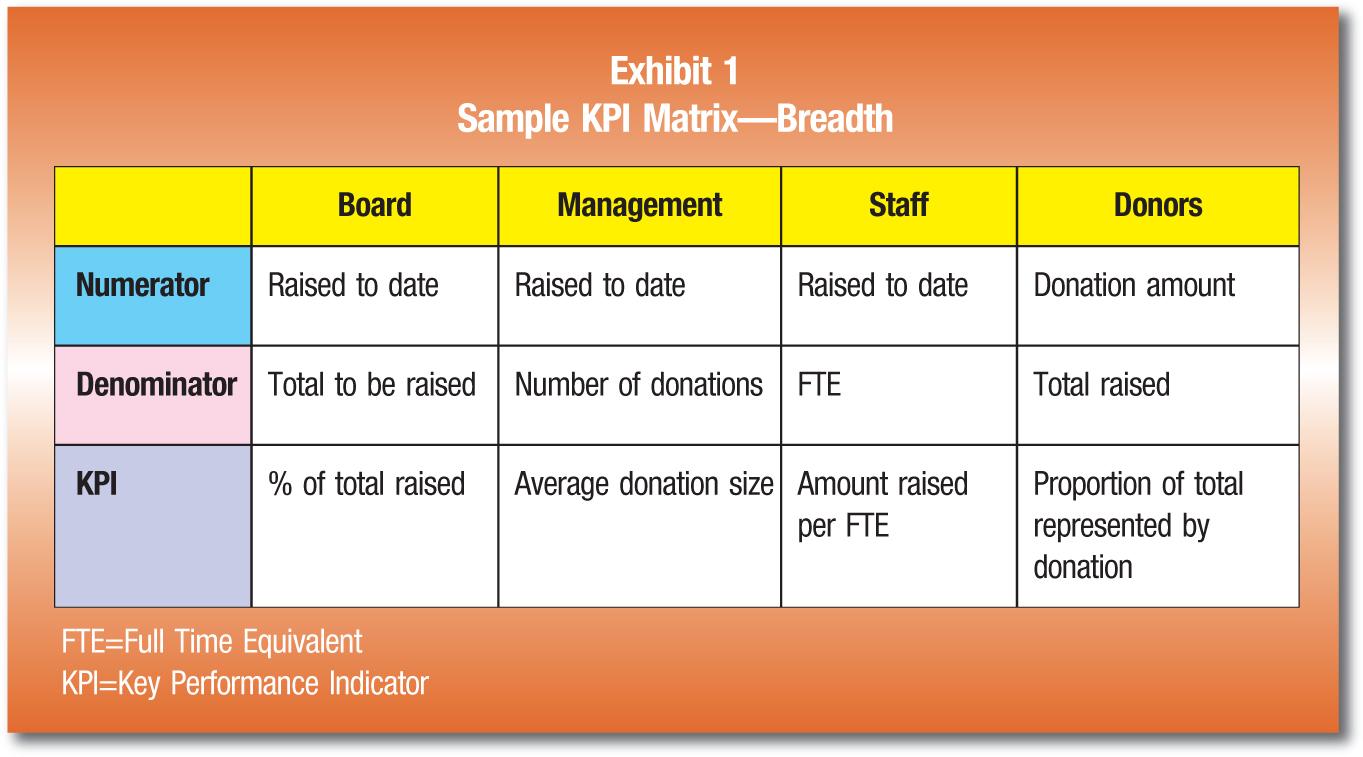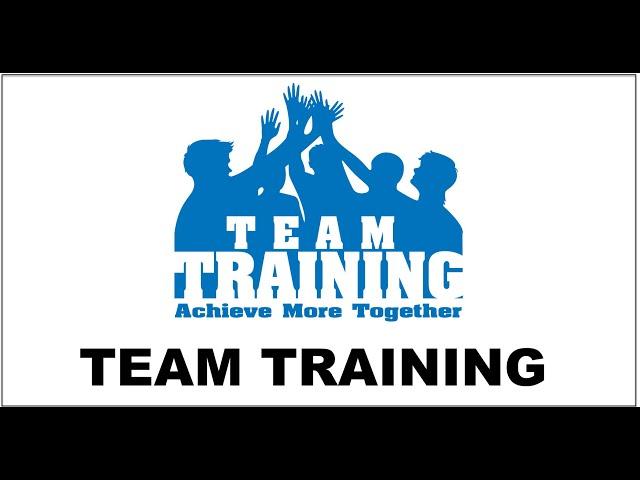
Unlocking Operational Efficiency: Your 9-Step Guide to Measure and Boost Performance
In today’s fast-paced business landscape, staying ahead of the competition means more than just having a great product or service. It’s all about how efficiently you operate behind the scenes. Imagine if you could slash unnecessary costs, streamline processes, and boost productivity—all while enhancing the overall experience for your customers. Sounds like a dream, right? Well, it’s not just possible; it’s essential!
In this article, we’re diving deep into the world of operational efficiency. Whether you’re a seasoned entrepreneur or just starting out, understanding what operational efficiency truly means, how to measure it, and, most importantly, how to boost it can transform your business. We’ll break it down into nine actionable steps that are easy to grasp and implement, ensuring you’re not only keeping pace but leading the charge in your industry. Ready to take your operations to the next level? Let’s get started!
Understanding Operational Efficiency and Its Importance
Operational efficiency refers to the ability of an organization to deliver products or services in the most cost-effective manner while maintaining high quality. It’s about doing more with less—less time, less labor, and fewer resources. In today’s competitive landscape, understanding this concept is crucial for any business aiming to thrive.
Companies that prioritize operational efficiency can significantly enhance their productivity and profitability. When operations run smoothly, it leads to:
- Reduced Costs: Streamlining processes minimizes waste and lowers operational costs.
- Improved Quality: Efficient systems often result in higher quality products and services.
- Faster Turnaround Times: Optimized operations ensure quicker delivery to customers.
- Increased Customer Satisfaction: High efficiency often leads to better service, boosting customer loyalty.
Measuring operational efficiency can be achieved through various metrics, commonly known as Key Performance Indicators (KPIs). These KPIs allow businesses to track performance against set benchmarks. Some effective KPIs to consider include:
| Metric | Description |
|---|---|
| Overall Equipment Effectiveness (OEE) | Measures the productivity of manufacturing equipment. |
| Cycle Time | Time taken to complete a process from start to finish. |
| Cost per Acquisition (CPA) | Cost involved in acquiring a new customer. |
Once you have a grasp on how to measure operational efficiency, boosting it becomes the next crucial step. Here are some strategies that can help:
- Automate Repetitive Tasks: Utilizing technology to automate mundane tasks frees up valuable employee time.
- Continuous Training: Regular training ensures that employees are up-to-date with the latest tools and practices.
- Feedback Loops: Establish a culture of feedback to continually improve processes and adapt to changes.
Understanding and prioritizing operational efficiency not only positions a business for immediate gains but also lays the groundwork for sustainable growth. As organizations equip themselves with insights and tools to measure and boost efficiency, they set the stage for enduring success in their respective markets.

Identifying Key Performance Indicators for Your Business
To truly enhance operational efficiency, you need to start with a firm grasp of your Key Performance Indicators (KPIs). KPIs are the measurable values that demonstrate how effectively your business is achieving key objectives. By identifying the right KPIs, you can focus your efforts on areas that will drive performance and improvement.
When selecting your KPIs, consider the following elements to ensure they align with your business goals:
- Relevance: Choose metrics that are closely tied to your strategic objectives. Each KPI should provide insight into areas that matter most to your business.
- Measurability: Ensure that the KPIs you select can be quantified and tracked over time. This will help you gauge progress and make informed decisions.
- Actionability: Identify KPIs that will prompt action. If your metrics don’t lead to changes in behavior or strategy, they’re not useful.
- Timeliness: Select KPIs that can be measured frequently enough to keep the pulse on your business. Regular updates will help you adapt quickly to changes.
Common KPIs that businesses find useful include:
- Net Profit Margin: Reflects how much of each dollar earned translates into profits.
- Customer Satisfaction Score: A direct measure of how your customers feel about your products or services.
- Employee Productivity Rate: Indicates the efficiency of your workforce by measuring output against time and resources.
- Operational Costs: Tracking costs allows you to pinpoint inefficiencies and areas for improvement.
Once you’ve identified your KPIs, it’s essential to track and analyze them effectively. Consider using a simple table to summarize your KPIs and the current performance metrics:
| Key Performance Indicator | Current Measurement | Target Measurement |
|---|---|---|
| Net Profit Margin | 15% | 20% |
| Customer Satisfaction Score | 85% | 90% |
| Employee Productivity Rate | 75% | 85% |
| Operational Costs | $500,000 | $450,000 |
Incorporating regular review sessions to assess your KPI performance is crucial. These sessions can lead to valuable insights and help you pivot your strategy as necessary. Don’t forget to engage your team in these discussions; their input can be invaluable in identifying trends and innovating solutions.
Ultimately, identifying and measuring KPIs is not just about tracking numbers—it’s about creating a culture of accountability and continuous improvement within your organization. By focusing on the right indicators, you empower your team to drive operational efficiency and achieve sustainable growth.
Assessing Current Operational Processes for Improvement
To enhance operational efficiency, a thorough assessment of current processes is essential. This evaluation serves as the foundation for identifying bottlenecks, redundancies, and areas ripe for innovation. Consider the following strategies:
- Process Mapping: Create a visual representation of workflows to identify steps that add value and those that do not.
- Stakeholder Interviews: Engage with team members to gain insights into their experiences and identify pain points.
- Data Analysis: Utilize key performance indicators (KPIs) to measure efficiency and effectiveness in existing processes.
Once you have gathered sufficient data, it’s time to dive deeper into specifics. Look at each step of your operations and ask:
- What is the purpose of this step?
- Is there a more efficient way to accomplish it?
- Can technology be integrated to streamline this process?
To illustrate how different processes compare in terms of efficiency, consider creating a simple table that outlines the current processes against the ideal outcomes:
| Current Process | Challenges | Proposed Solution |
|---|---|---|
| Order Fulfillment | Delay in shipping | Implement automated tracking system |
| Inventory Management | Overstocking and stockouts | Adopt just-in-time inventory approach |
| Customer Service | High response times | Introduce AI chatbots for immediate assistance |
After identifying challenges within your processes, prioritize them based on impact and feasibility. A focused approach will help allocate resources efficiently and maximize ROI. Here’s how to prioritize:
- Impact Assessment: Determine which processes have the most significant impact on overall efficiency.
- Feasibility Study: Assess the resources and time required for changes.
- Quick Wins: Look for processes that can be improved with minimal effort for immediate gains.
Regular assessments should not be a one-time task. Implement a feedback loop where teams can continuously provide insights on process performance. The more you engage your workforce in this journey, the more innovative solutions you’ll uncover. Consider setting up quarterly reviews to keep operational efficiencies top of mind.
Crafting a Roadmap for Operational Efficiency
Creating a roadmap for operational efficiency is like charting a course through uncharted waters. You need to know where you are, where you want to go, and the best routes to get there. The first step in this journey is to identify key performance indicators (KPIs) that matter most to your organization. These metrics will serve as your compass, guiding your decisions and helping you measure progress.
Once you’ve established your KPIs, it’s essential to analyze your current processes. This involves a deep dive into how tasks are currently being performed. Are there bottlenecks slowing down production? Is there redundancy in roles? By mapping out these processes, you can pinpoint areas ripe for improvement. Tools like flowcharts and process maps can be incredibly helpful in visualizing the workflow.
Next, consider implementing technology solutions that can streamline operations. Automation tools, project management software, and data analytics platforms can significantly enhance productivity. Evaluate your current tech stack and determine if there are gaps that new systems can fill. Don’t be afraid to invest; the ROI often pays for itself in increased efficiency.
Engaging your team in this process is crucial. Foster a culture of collaboration and feedback. Regularly solicit input from employees at all levels about what works and what doesn’t. They are often the best sources of insight into how processes can be improved. Team brainstorming sessions can lead to innovative solutions that may not have been previously considered.
| Team Input Methods | Benefits |
|---|---|
| Surveys | Gather anonymous feedback quickly |
| Workshops | Encourage creative problem-solving |
| One-on-One Meetings | Build trust and deeper insights |
Now that you have engaged your team and identified key areas for improvement, it’s time to set actionable goals. Break down your larger objectives into smaller, manageable tasks. This will help maintain momentum and keep the team motivated. Consider using the SMART criteria—Specific, Measurable, Achievable, Relevant, and Time-bound—to ensure your goals are clear and attainable.
As you implement changes, make it a point to measure and review the impact of those changes regularly. Use the KPIs established earlier to track performance and gather data on how new initiatives are affecting overall efficiency. This iterative process allows you to refine your strategies continuously, ensuring you’re always moving in the right direction.
don’t forget the importance of communication throughout this journey. Keep all stakeholders updated on progress, setbacks, and successes. Transparent communication fosters trust and keeps everyone aligned with the organization’s goals. Regular updates can also highlight the value of operational efficiency initiatives, reinforcing their importance across the board.

Leveraging Technology to Enhance Your Operations
In today’s fast-paced business world, leveraging technology is no longer optional—it’s essential. Organizations that harness the power of modern tools and solutions can streamline their operations significantly, transforming inefficiencies into opportunities for growth. Here are some ways to integrate technology effectively into your operational strategy:
- Automation of Routine Tasks: Use software to automate repetitive tasks, such as data entry and invoicing. This not only saves time but also reduces the risk of errors, allowing your team to focus on more strategic activities.
- Data Analytics: Implement data analytics tools to gather insights from your operations. Understanding key performance indicators (KPIs) helps you make informed decisions and spot trends that can lead to improved performance.
- Cloud Solutions: Transition to cloud-based platforms for storage and collaboration. These solutions increase accessibility, allowing teams to work from anywhere, which is crucial in today’s remote work environment.
- Project Management Tools: Utilize project management software to streamline communication and task allocation. Keeping everyone on the same page can dramatically improve project delivery times and enhance team collaboration.
Integrating these technologies can result in substantial time savings and increased productivity. For instance, consider how much faster your team could respond to customer inquiries with a reliable CRM system in place. With technology, the speed of response can be a game-changer for maintaining customer satisfaction.
Measuring Success with Technology
To truly enhance operations, it’s crucial to measure the impact of technology on your business. Establish benchmarks and track progress regularly. Here’s a simple table to illustrate how you can measure success:
| Technology | Metric to Measure | Target Improvement |
|---|---|---|
| Automation Tools | Time Saved on Tasks | 30% |
| Data Analytics | Decision-making Speed | 25% |
| Cloud Solutions | Access Times | 40% |
| Project Management Software | Project Completion Rate | 20% |
By regularly reviewing these metrics, you can adjust your strategies and ensure that your technology investments are yielding the desired results. Continuous monitoring leads to ongoing improvements, keeping your operations agile and responsive to market demands.
Furthermore, don’t underestimate the power of employee training. Equip your team with the skills necessary to utilize these technologies fully. Regular workshops and training sessions can unlock the full potential of your technological investments, ensuring everyone is on board and engaged.
foster a culture of innovation within your organization. Encourage your team to suggest new technologies or methodologies that can further enhance operations. Being open to new ideas not only improves efficiency but also promotes employee satisfaction and engagement, creating a win-win scenario for everyone involved.

Fostering a Culture of Continuous Improvement
Creating an environment where continuous improvement thrives is essential for any organization looking to boost operational efficiency. When your team embraces the idea that there is always room for enhancement, it cultivates a mindset focused on innovation and excellence. Here’s how to foster that culture:
- Encourage Open Communication: Foster an atmosphere where team members feel safe to share ideas, feedback, and concerns. Regularly scheduled meetings and anonymous surveys can help facilitate this exchange.
- Set Clear Goals: Define what continuous improvement looks like for your team. Establish measurable objectives that align with the broader organizational goals to ensure everyone is on the same page.
- Recognize and Reward Efforts: Celebrate successes, no matter how small. Acknowledging efforts encourages others to contribute to the improvement process and reinforces the value of their input.
- Provide Training and Resources: Equip your team with the necessary tools and training to identify inefficiencies and implement solutions. This investment not only boosts morale but also enhances skills within your organization.
Incorporate regular feedback loops into your operations. This could be as simple as conducting weekly check-ins or utilizing performance metrics to measure progress. By analyzing the results, you create opportunities for adjustment and growth, keeping improvement at the forefront of your team’s focus.
Utilize technology as a catalyst for improvement. Implementing software that tracks performance and identifies bottlenecks can be invaluable. Consider tools that facilitate real-time communication and project management, ensuring everyone is aligned and aware of ongoing initiatives.
| Tool | Purpose |
|---|---|
| Project Management Software | Streamlines tasks and enhances collaboration. |
| Feedback Platforms | Gathers employee insights and suggestions. |
| Performance Tracking Tools | Measures productivity and identifies inefficiencies. |
Lastly, promote a mindset of experimentation. Encourage your team to try out new methods or solutions without the fear of failing. When failure is viewed as a step towards success, rather than a setback, it opens the door to innovative practices that can significantly enhance your operational efficiency.

Training and Empowering Your Team for Success
In today’s fast-paced business environment, the success of your organization hinges on the strength and capability of your team. Investing in training not only enhances individual skills but also fosters a culture of collaboration and innovation. When your team feels empowered, their productivity soars, leading to improved operational efficiency.
Training Programs should be tailored to address the specific needs of your team. Regular assessments can help identify skill gaps and dictate the focus of training initiatives. Consider implementing:
- Workshops and seminars led by industry experts
- Online courses and certifications
- Mentorship programs that pair experienced employees with newer team members
Moreover, empowerment goes beyond just skill development. It is crucial to instill a sense of ownership among team members. When employees feel they have a stake in the company’s success, they are more likely to go above and beyond. Here are a few strategies to foster this mindset:
- Encourage input on decision-making processes
- Recognize and reward innovative ideas
- Provide opportunities for professional growth and advancement
To effectively measure the impact of your training initiatives, establish key performance indicators (KPIs). These metrics can provide insight into how training is translating into operational efficiency. Consider tracking:
| Metric | Description |
|---|---|
| Employee Productivity | Output per employee before and after training |
| Employee Retention Rates | Comparison of turnover rates pre- and post-training |
| Customer Satisfaction | Feedback scores before and after team training |
Continuous feedback loops are also essential. Regular check-ins and assessments can help gauge employee engagement and allow for real-time adjustments to training programs. Make it a habit to solicit feedback from your team regarding the training they receive and how it impacts their work.
Ultimately, by investing in the training and empowerment of your employees, you are not only enhancing their skillsets but also reinforcing a culture of continuous improvement. This proactive approach not only boosts operational efficiency but also contributes to a more motivated and engaged workforce, ready to tackle challenges head-on.

Utilizing Data Analytics to Drive Informed Decisions
In today’s fast-paced business landscape, leveraging data analytics isn’t just a luxury—it’s a necessity. By analyzing operational data, organizations can uncover hidden inefficiencies and make informed decisions that drive productivity and profitability. The key is to transform raw data into actionable insights that align with your strategic goals.
To start, consider the following approaches:
- Identify Key Performance Indicators (KPIs): Pinpoint the metrics that truly matter for your operations. These could include turnaround times, error rates, and customer satisfaction scores.
- Utilize Descriptive Analytics: This type of analysis helps you understand past performance by summarizing historical data, enabling you to spot trends and patterns.
- Implement Predictive Analytics: By forecasting future outcomes based on historical patterns, you can make proactive decisions that enhance efficiency.
- Adopt Prescriptive Analytics: This advanced method suggests actions to optimize processes, guiding you towards the best course of action.
Once you’ve established your analytics framework, it’s crucial to integrate these insights into your decision-making processes. Regularly review your KPIs and adjust your strategies accordingly. This iterative approach ensures that your operations remain aligned with evolving business goals.
For a practical application of data analytics, consider creating a simple dashboard that visualizes your KPIs. A well-designed dashboard can help stakeholders quickly assess performance and identify areas for improvement. Here’s an example of a dashboard layout:
| Metric | Current Value | Goal | Status |
|---|---|---|---|
| Average Turnaround Time | 24 hours | 20 hours | Needs Improvement |
| Error Rate | 2% | 1% | Moderate Risk |
| Customer Satisfaction Score | 85% | 90% | On Watch |
Regularly updating this dashboard keeps your team engaged and focused on performance improvements. Moreover, embracing a culture that values data-driven decision-making encourages innovation and accountability.
Lastly, don’t forget the importance of cross-departmental collaboration. Share insights across teams to foster a holistic understanding of operational efficiency. By working together, departments can identify bottlenecks and devise cross-functional solutions that enhance overall performance.

Building Strong Communication Channels Across Teams
In today’s fast-paced work environment, the ability to communicate effectively across teams can make all the difference. Clear communication fosters collaboration, minimizes misunderstandings, and ensures that everyone is aligned with organizational goals. By prioritizing communication channels, teams can break down silos and work towards common objectives seamlessly.
To build strong communication channels, start by implementing regular check-ins. These can be weekly or bi-weekly meetings where team members share progress, highlight challenges, and brainstorm solutions together. This not only keeps everyone updated but also encourages an open dialogue.
Utilizing effective tools is crucial. Consider adopting platforms that promote real-time communication, such as:
- Instant messaging apps (like Slack or Microsoft Teams)
- Project management tools (like Trello or Asana)
- Video conferencing solutions (like Zoom or Google Meet)
These tools can help facilitate transparent communication and quick feedback loops, enabling teams to address issues as they arise.
Encouraging a culture of transparency is another key factor. When team members feel safe sharing their thoughts and feedback, it builds trust and enhances collaboration. Create opportunities for informal interactions, whether through team-building activities or casual catch-up sessions. This helps to strengthen personal connections, making professional communication feel more natural and open.
To measure the effectiveness of your communication strategies, consider setting up feedback mechanisms. You might use:
- Anonymized surveys to gauge team sentiment
- Regular feedback sessions to identify pain points
- Performance metrics to assess collaboration impacts on productivity
Utilizing such feedback not only helps in refining communication approaches but also demonstrates to the team that their voices are valued.
| Communication Strategy | Benefit |
|---|---|
| Regular Check-ins | Fosters accountability and progress tracking |
| Real-time Tools | Enhances responsiveness and accessibility |
| Feedback Mechanisms | Encourages continuous improvement and transparency |
celebrate communication successes. Recognizing individuals or teams who exemplify effective communication not only reinforces the behavior but also inspires others to follow suit. Whether through shout-outs in meetings or acknowledgement in company newsletters, celebrating these wins fosters a positive communication culture.

Setting Realistic Goals and Tracking Progress
When it comes to enhancing operational efficiency, understanding the importance of setting realistic goals cannot be overstated. Goals should act as guiding stars, illuminating the path toward improved performance. To ensure that these goals are not only ambitious but also attainable, consider the following strategies:
- SMART Criteria: Make sure your goals are Specific, Measurable, Achievable, Relevant, and Time-bound. This framework provides clarity and direction.
- Break It Down: Divide larger goals into smaller, manageable tasks. This makes tracking progress easier and keeps the team motivated.
- Engage Your Team: Involve team members in the goal-setting process. This inclusion fosters a sense of ownership and accountability.
- Flexibility is Key: Be prepared to adjust your goals as circumstances change. This adaptability ensures you remain on course even when unexpected challenges arise.
After establishing these goals, the next crucial step is to monitor progress effectively. Regular check-ins not only help in assessing advancement but also provide opportunities for real-time feedback. Consider implementing the following methods for tracking:
- Progress Dashboards: Utilize visual tools that display key performance indicators (KPIs) and progress in real-time. This can help keep everyone aligned and focused.
- Regular Meetings: Schedule weekly or bi-weekly progress meetings to discuss achievements and obstacles. These sessions foster collaboration and quick decision-making.
- Feedback Loops: Establish a system for obtaining and integrating feedback. This ensures that everyone’s voice is heard, leading to continuous improvement.
To facilitate tracking, you might consider using tables to summarize progress at a glance. Below is an example of how you can structure your goals and track their status:
| Goal | Status | Completion Date | Next Steps |
|---|---|---|---|
| Reduce production time by 20% | In Progress | December 2023 | Implement new scheduling software |
| Increase customer satisfaction ratings by 15% | Achieved | October 2023 | Continue feedback surveys |
| Launch new product line | Pending | March 2024 | Finalize design prototypes |
remember that tracking progress is not just about gathering data; it’s about interpreting it to drive action. Regularly review your achievements against your set goals, and don’t hesitate to pivot your strategies as needed. This will not only enhance operational efficiency but also cultivate a culture of continuous improvement within your organization.

Identifying and Eliminating Waste in Your Operations
In every operation, whether it’s a manufacturing plant or a service-based business, waste can lurk in various forms, often unnoticed. Identifying these inefficiencies is the first step toward creating a streamlined operation. Start by analyzing your current processes to uncover areas where resources—time, materials, or labor—are being squandered. Here are some areas to focus on:
- Excess Inventory: Too much stock can lead to increased holding costs and waste. Regularly review your inventory levels and turnover rates.
- Overproduction: Producing more than necessary can lead to obsolescence. Align production closely with demand.
- Unnecessary Motion: Examine workflows for unnecessary movements that delay processes. Streamline tasks to minimize steps.
- Defects: Quality issues can be costly. Implement quality control measures at every stage of production to catch defects early.
Once you’ve identified areas of waste, the next step is to eliminate them. This involves not just corrective actions but also creating a culture of continuous improvement. Here’s how you can foster this mindset within your team:
- Engage Your Team: Encourage employees to identify inefficiencies they observe. Their frontline experience can provide valuable insights.
- Implement Lean Principles: Adopt methodologies like Lean or Six Sigma, which emphasize reducing waste and improving quality.
- Measure Performance: Use KPIs to gauge the effectiveness of changes. Metrics such as cycle time, cost per unit, and customer satisfaction can provide clarity.
- Regular Training: Equip your team with the skills to identify and tackle waste through ongoing training and workshops.
To visualize the impact of these changes, consider creating a simple comparison table to highlight key performance indicators before and after implementing waste reduction measures:
| Metric | Before Changes | After Changes |
|---|---|---|
| Production Cycle Time | 25 hours | 18 hours |
| Defect Rate | 5% | 1% |
| Inventory Turnover | 4 times/year | 8 times/year |
By measuring the results of your efforts, you can demonstrate the tangible benefits of reducing waste. This data can help build buy-in from stakeholders and motivate your team to maintain focus on efficiency. Remember, the goal is not just to eliminate waste but to create a responsive operation that can adapt to changing demands while maximizing resources.

Celebrating Small Wins to Maintain Momentum
- Boosts Morale: When you take time to celebrate, it energizes the team and boosts morale. Happy employees are more engaged and productive.
- Encourages Team Cohesion: Celebrations bring people together, reinforcing bonds and improving collaboration.
- Allows Reflection: Recognizing achievements provides an opportunity to reflect on what worked, which can be invaluable for future efforts.
- Increases Visibility: Highlighting achievements creates a sense of ownership and visibility around operational goals.
- Shout-Outs: Use team meetings or company newsletters to publicly acknowledge achievements.
- Incentives: Offer small rewards or tokens of appreciation, such as gift cards or extra time off.
- Team Activities: Organize short get-togethers or virtual hangouts to celebrate collective efforts.
- Visual Boards: Create a visual representation of milestones reached, like a progress board or digital dashboard.
| Celebration Method | Team Suitability |
|---|---|
| Shout-Outs | Great for outgoing teams |
| Incentives | Effective for competitive teams |
| Team Activities | Ideal for collaborative teams |
| Visual Boards | Useful for all types of teams |

Adapting and Evolving Your Strategy for Lasting Impact
In a world where change is the only constant, adapting your operational strategy is essential for sustaining success. Embracing flexibility allows your organization to remain relevant and responsive to market demands. By continuously evaluating and refining your processes, you can not only enhance efficiency but also foster a culture of innovation.
Understanding the landscape is the first step in this journey. It’s crucial to recognize the factors that influence your operational environment. This includes everything from customer expectations and technological advancements to competitive pressures. Conducting a SWOT analysis (Strengths, Weaknesses, Opportunities, Threats) can help you gain valuable insights into where your organization stands and where it needs to go.
Next, focus on measuring performance. Establish key performance indicators (KPIs) that align with your organizational goals. These metrics should be precise and actionable, providing clarity on what success looks like. Consider incorporating metrics such as:
- Time to market
- Cost per unit
- Employee productivity
- Customer satisfaction scores
By regularly tracking these KPIs, you can identify trends and pinpoint areas for improvement, allowing for timely interventions.
Once you have a solid understanding of your current state, it’s time to boost efficiency through strategic initiatives. This could involve leveraging technology, such as automation tools, that reduce manual workloads and streamline operations. Implementing lean management principles can also aid in eliminating waste and optimizing processes, ensuring that every resource is utilized to its fullest potential.
Furthermore, cultivating a culture of continuous improvement is vital. Encourage your team to share insights and suggestions, fostering an environment where innovation thrives. Regular training and development opportunities can empower employees to embrace change, equipping them with the skills to adapt to new challenges.
| Strategy | Description |
|---|---|
| Automation | Utilizing technology to perform repetitive tasks. |
| Lean Management | Focusing on maximizing value while minimizing waste. |
| Cross-Training | Training employees in multiple roles to increase flexibility. |
As you implement these strategies, don’t forget the importance of feedback loops. Regularly solicit feedback from both employees and customers. This not only helps you assess the effectiveness of your changes but also demonstrates your commitment to improvement. Create channels for open communication, where insights can flow freely, enabling you to pivot as necessary.
remember that adaptation is not a one-time event but an ongoing process. Stay attuned to external shifts and internal dynamics, and be prepared to iterate your strategies accordingly. By embracing a mindset of continuous evolution, your organization can achieve lasting impact and maintain a competitive edge in today’s fast-paced business landscape.
Frequently Asked Questions (FAQ)
Q&A on Operational Efficiency: Understand, Measure & Boost It in 9 Steps
Q: What is operational efficiency, and why is it important for businesses?
A: Great question! Operational efficiency refers to the ability of an organization to deliver products or services to its customers in the most cost-effective manner while ensuring high quality. It’s crucial because it directly impacts your bottom line. When you operate efficiently, you can reduce costs, improve customer satisfaction, and ultimately boost profitability. Think of it as the fine-tuning of your business engine—when everything runs smoothly, you can focus more on growth and innovation.
Q: How can I start measuring operational efficiency in my organization?
A: Measuring operational efficiency starts with identifying key performance indicators (KPIs) relevant to your business goals. Common metrics include cycle time, cost per unit, and customer satisfaction scores. Once you have your KPIs, collect data regularly to see where you stand. Don’t worry—it sounds complex, but it’s like keeping score in a game. The clearer your metrics, the easier it is to see where improvements are needed!
Q: What are some easy steps I can take to boost operational efficiency?
A: Absolutely! Here are a few actionable steps you can follow:
- Analyze Current Processes: Take a deep dive into your current operations. Look for bottlenecks or redundancies that might be slowing you down.
- Embrace Technology: Leverage automation tools to streamline repetitive tasks. This can free up your team to focus on higher-value activities.
- Train Your Team: Invest in training and skill development. A knowledgeable team is more efficient and effective.
- Encourage Feedback: Create a culture where employees feel comfortable sharing their thoughts on processes. They often have the best insights!
- Set Clear Goals: Everyone should know what targets they are aiming for. Clear goals drive accountability and focus.
- Monitor Progress: Regularly review your KPIs to track improvements and adjust your strategies as necessary.
- Benchmark Against Competitors: Understand how you stack up against others in your industry. Learning from the best can provide valuable insights.
- Adopt Lean Practices: Implement methods to reduce waste and improve flow. Lean practices can significantly enhance efficiency.
- Stay Agile: Be open to change and ready to adapt your processes as market conditions evolve.
Q: How often should I review and adjust my operational efficiency strategies?
A: Ideally, you should review your strategies quarterly. Business landscapes can shift rapidly due to market trends, customer preferences, or even new technologies. Regular assessments help you stay ahead of the curve and ensure your operations remain aligned with your goals. Think of it as a health check-up for your business!
Q: What are the long-term benefits of improving operational efficiency?
A: Improving operational efficiency can lead to numerous long-term benefits, including increased profitability, enhanced customer satisfaction, and a stronger competitive edge. Over time, efficient operations can also foster a culture of continuous improvement within your organization. This means you’re not just making changes for today; you’re building a resilient business that can adapt and thrive in the future.
Q: Any final advice for someone looking to boost operational efficiency?
A: Don’t be afraid to start small! Even minor adjustments can lead to significant improvements. Be patient and persistent. Operational efficiency isn’t a one-time effort; it’s an ongoing journey. Engage your team, stay curious, and be willing to learn along the way. Remember, every step you take toward efficiency is a step toward greater success!
In Summary
Outro
There you have it! Boosting operational efficiency may seem like a daunting task, but with the right approach and a solid understanding of the key steps we’ve outlined, you’re well on your way to transforming your business operations. Remember, it’s not just about cutting costs; it’s about maximizing value and ensuring that every aspect of your workflow contributes to your overall goals.
So, take a moment to reflect on what you’ve learned. Identify the areas in your operations that can benefit from a little fine-tuning. Whether it’s streamlining communication, embracing new technologies, or fostering a culture of continuous improvement, every small change can lead to significant results.
Now, it’s your turn to take action! Gather your team, set your goals, and start measuring your progress today. Operational efficiency isn’t just a strategy; it’s a mindset. By committing to these nine steps, you’ll not only enhance productivity but also create a more agile, innovative, and resilient organization.
Let’s embark on this journey together—after all, an efficient operation is the backbone of a thriving business. Are you ready to make the leap? Your future self will thank you!






